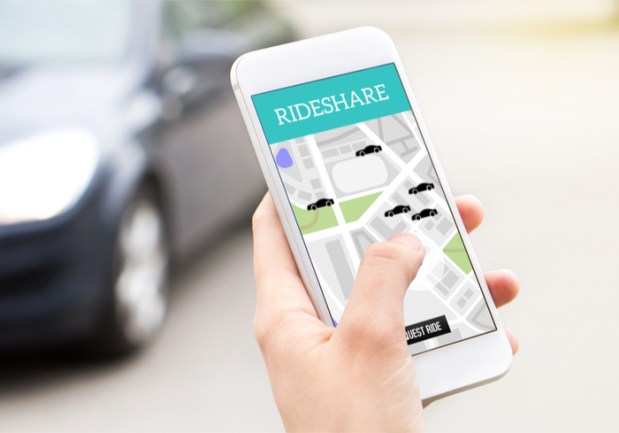Rideshare Fare Aggregation Apps Highlight Local Rideshares, Surge Pricing

Rideshare platforms typically reach consumers through their own mobile apps — be it Uber, Lyft or a smaller player, like Bounce in San Diego. As a result, it can be hard for smaller ridesharing companies to attract new consumers.
Enter Whipster, which aggregates fares from multiple rideshare providers. In all, it operates in 400 cities in North America and reveals all the choices a consumer has for a ride — giving exposure to smaller rideshares, as well as Uber and Lyft.
“There are 41 rideshare companies in the country now,” Founder and CEO of Whipster Russel Olinger told PYMNTS in an interview. “Most people are unaware of that.”
Business travelers, in particular, might not be aware of a local rideshare company when they land in a new city, for example. These companies may very well offer lower fares than Uber and Lyft. And, of course, they may or may not have surge pricing.
Surge Pricing
Whipster aims to help riders avoid higher prices. In fact, the app displays surge pricing fares, which are listed in red, alongside standard prices, which are listed in green.
“So, it’s an easy visual for the consumer to know something’s afoot … the price is higher than it normally should be,” Olinger said.
Users of rideshares are no stranger to paying more for their rides from Uber, Lyft and others during peak hours — and horror stories over ridiculously high fares abound. In October, an Illinois woman hopped out of an Uber after a 100-mile ride to discover she had been charged nearly a thousand dollars.
The ride — from a Chicago suburb to O’Hare International Airport and back — would normally cost $120. But, due to the ridesharing giant’s “surge pricing” strategy, the ride cost nearly eight times as much.
Uber has since given the rider her money back, telling Chicago’s ABC 7 the fare was a “perfect storm” of confusion. Still, tales of overcharging — or even high-tech price gouging — are not uncommon for Uber, which said in 2016 that surge pricing was applied to a whopping 40 percent of its trips.
And, yes, Uber isn’t alone in the price complaints department. Lyft’s surge prices were above 500 percent after the Super Bowl, according to The Drive.
Target Market
Whipster seeks to serve a variety of riders, including millennials who’re looking for a new way to get around cities. Rideshares, after all, appeal to a generation that doesn’t want to deal with gas, maintenance and the parking fees associated with owning a car, among other expenses, Olinger said.
“The entire millennial generation is really contemplating modern travel in the urban area,” Olinger said. “They don’t want cars. They don’t want the hassle of owning a car.”
In fact, 93 percent of U.S. millennials don’t plan on boycotting Uber despite its recent difficulties, with many analysts believing that brand recognition is one of the main factors for customer loyalty.
Business travelers also like the convenience of rideshares. And it doesn’t hurt that they can go back to their employer after finding a good fare on Whipster and reveal they chose a $15 ride instead of a $20 ride, Olinger said.
Revenue Opportunities
While the company is at pre-revenue stage, Olinger said Whipster seeks to generate revenue through a few ways — such as charging a vendor booking fee, like an airline or hotel.
Olinger said the company also plans on generating revenue by advertising the expansions of smaller rideshare companies that are specific to a region or city. For example, if a company that serves riders in California wants to expand to Tampa, Florida, they can place an ad on the app.
“We can prime the Tampa market to say ‘Vendor X is coming in three months; do you want to drive for Company X?’” Olinger said, adding that the app offers incentives to get customers to look at the announcement on the vendor’s app, which provides a revenue opportunity for Whipster. And the app, of course, can promote that vendor’s services to riders too.
Olinger also plans to work with companies that serve its users, such as business travelers.
“It is part of our business plan to be able to do that,” Olinger said. “We have a lot of things to accomplish between now and then, but it is one of the opportunities to help us … get our product into more riders’ hands.”
Beyond Rideshares
Besides Uber, Lyft and the like, Whipster provides information on several modes of transportation, including bikeshares and public transportation.
“Without a doubt, the ridesharing industry is what we’re going to be known for,” Olinger said. “[But] we like to call ourselves ‘a ground transportation platform’” — for instance, the app features 85 bike shares as well as public transit schedules.
While users of the mobile app could choose a public transit option instead of a rideshare, Olinger isn’t worried about lost revenues. Those consumers have often made the decision to choose a bike share or public transportation before they turned on the app. But the extra options help build a better experience for users, he said.
From a payments perspective, Whipster users currently follow a link to a rideshare vendor to complete a transaction. But, in the future, he’s planning to integrate payments into the app, so users don’t have to leave the app to pay for a ride.
Overall, Olinger hopes to grow the business to the point that it becomes second nature for a large portion of the population to use.
“Our goal is to be a household name, like Expedia or Travelocity,” he said.
